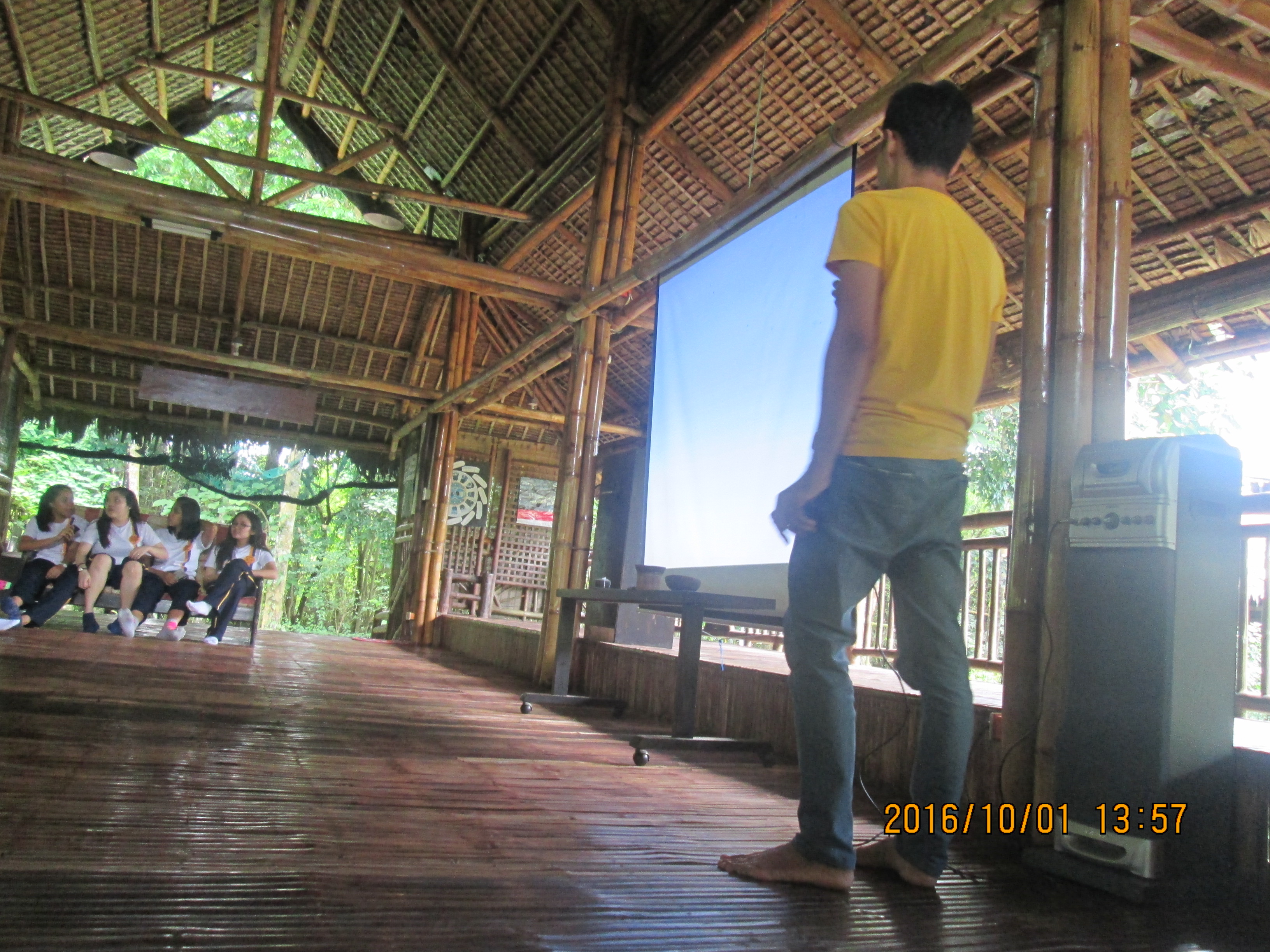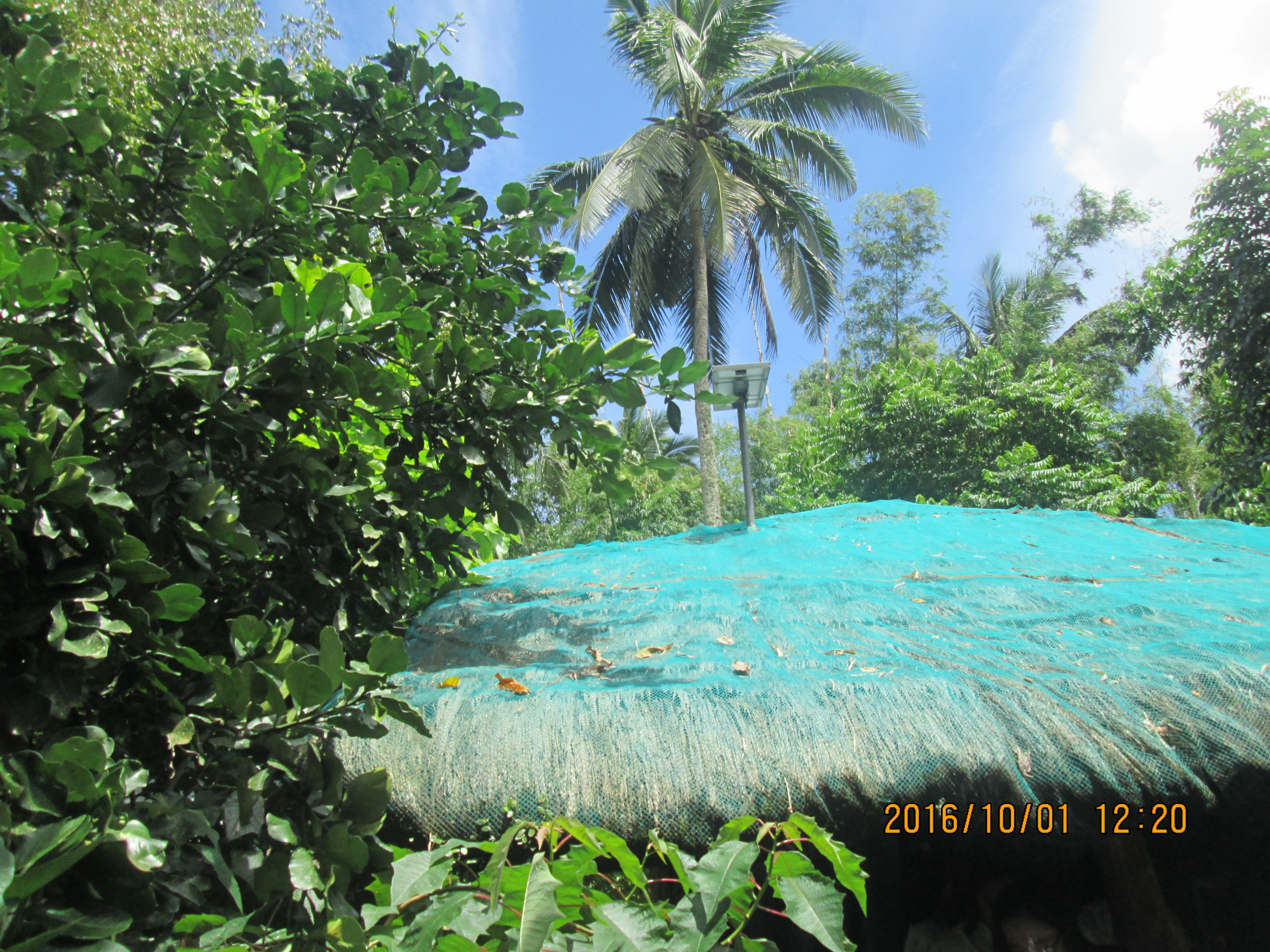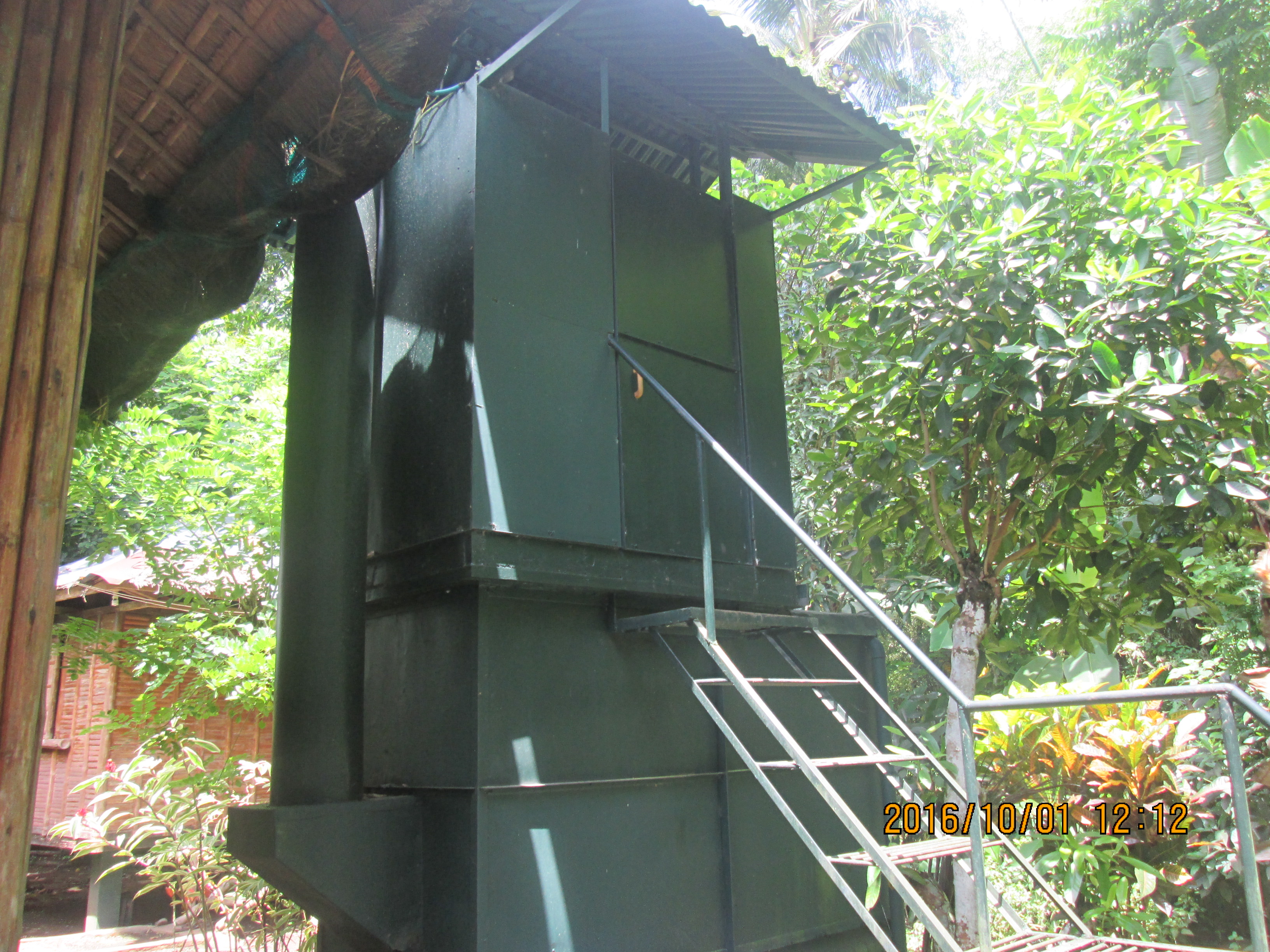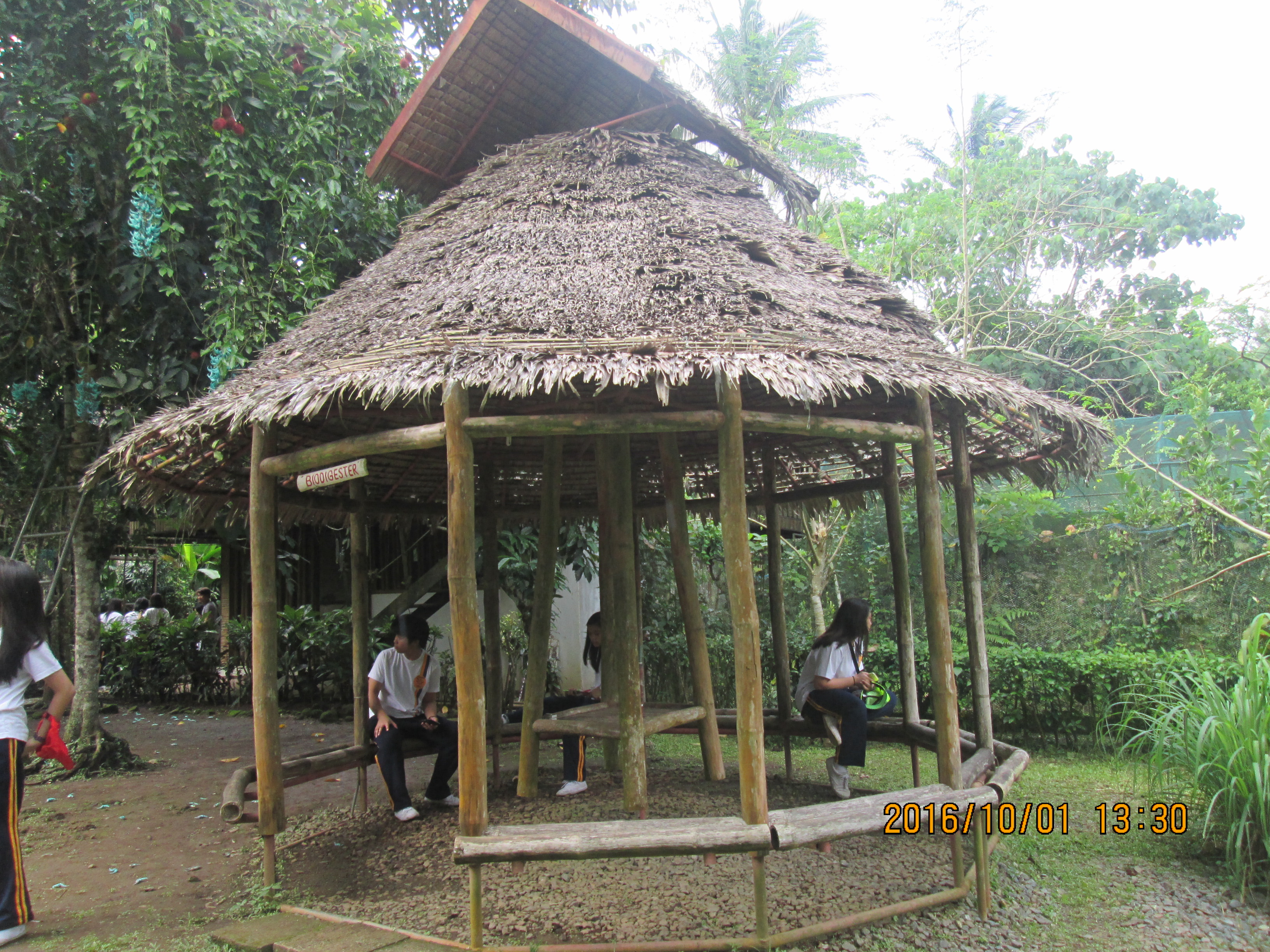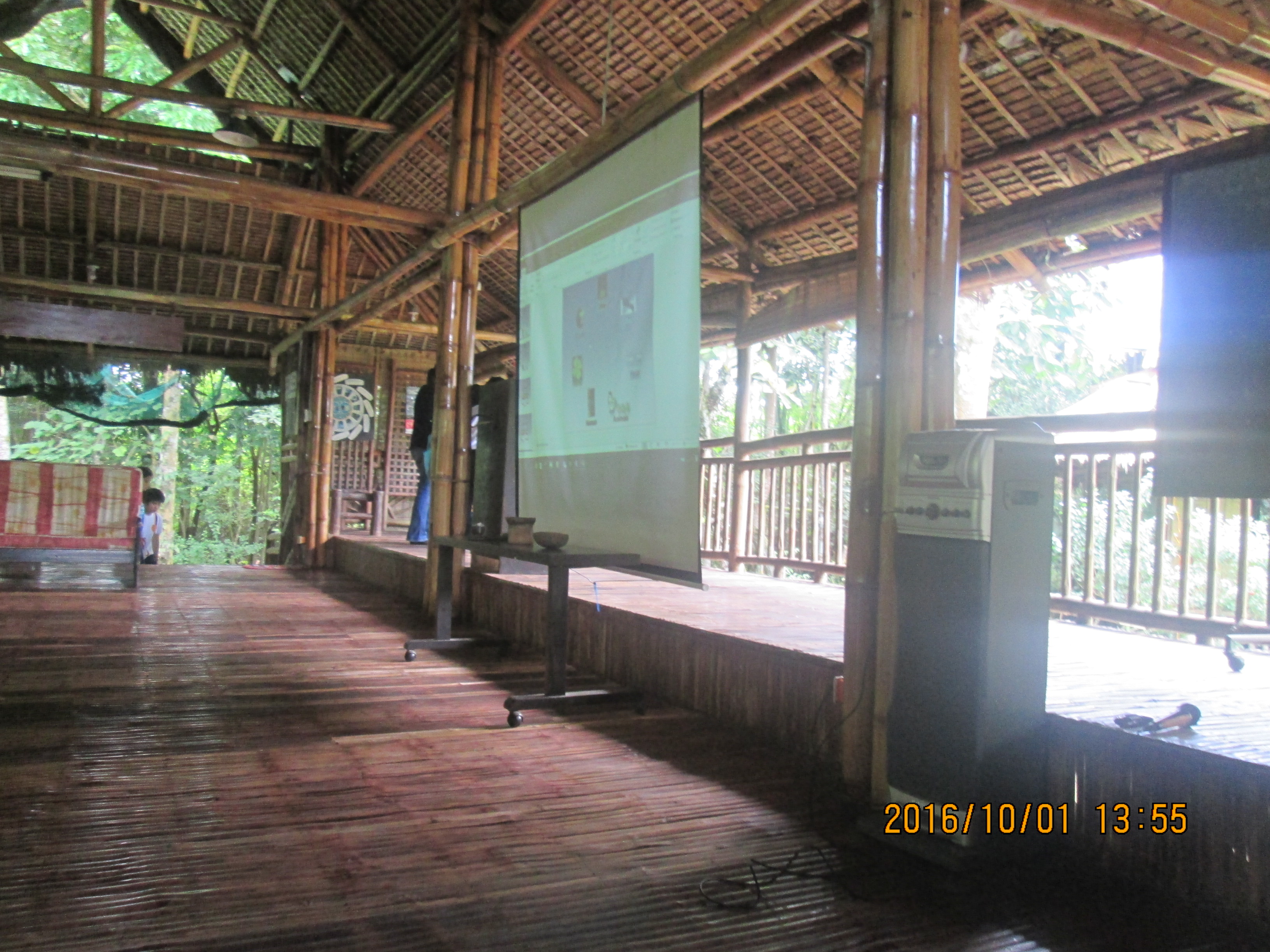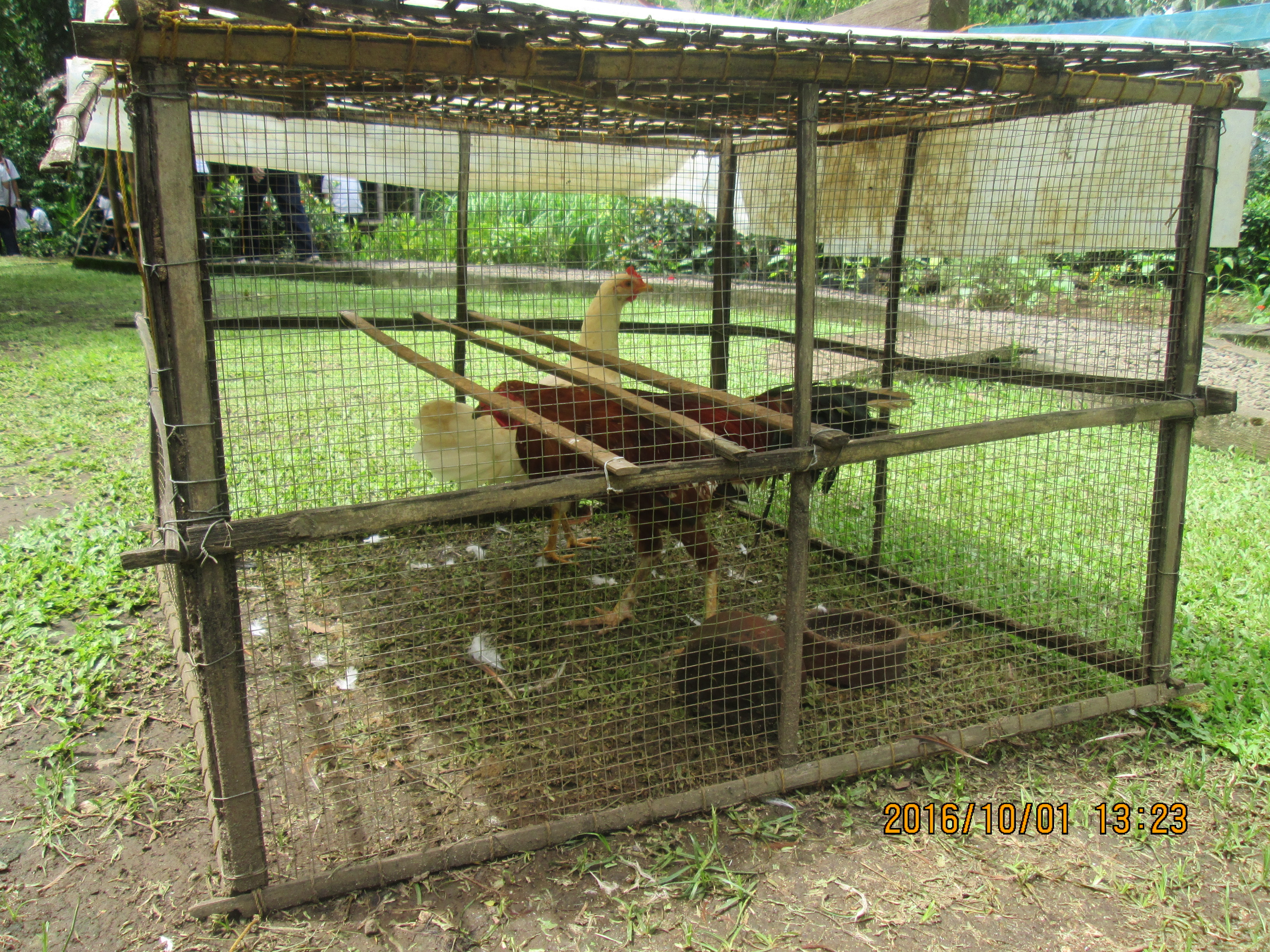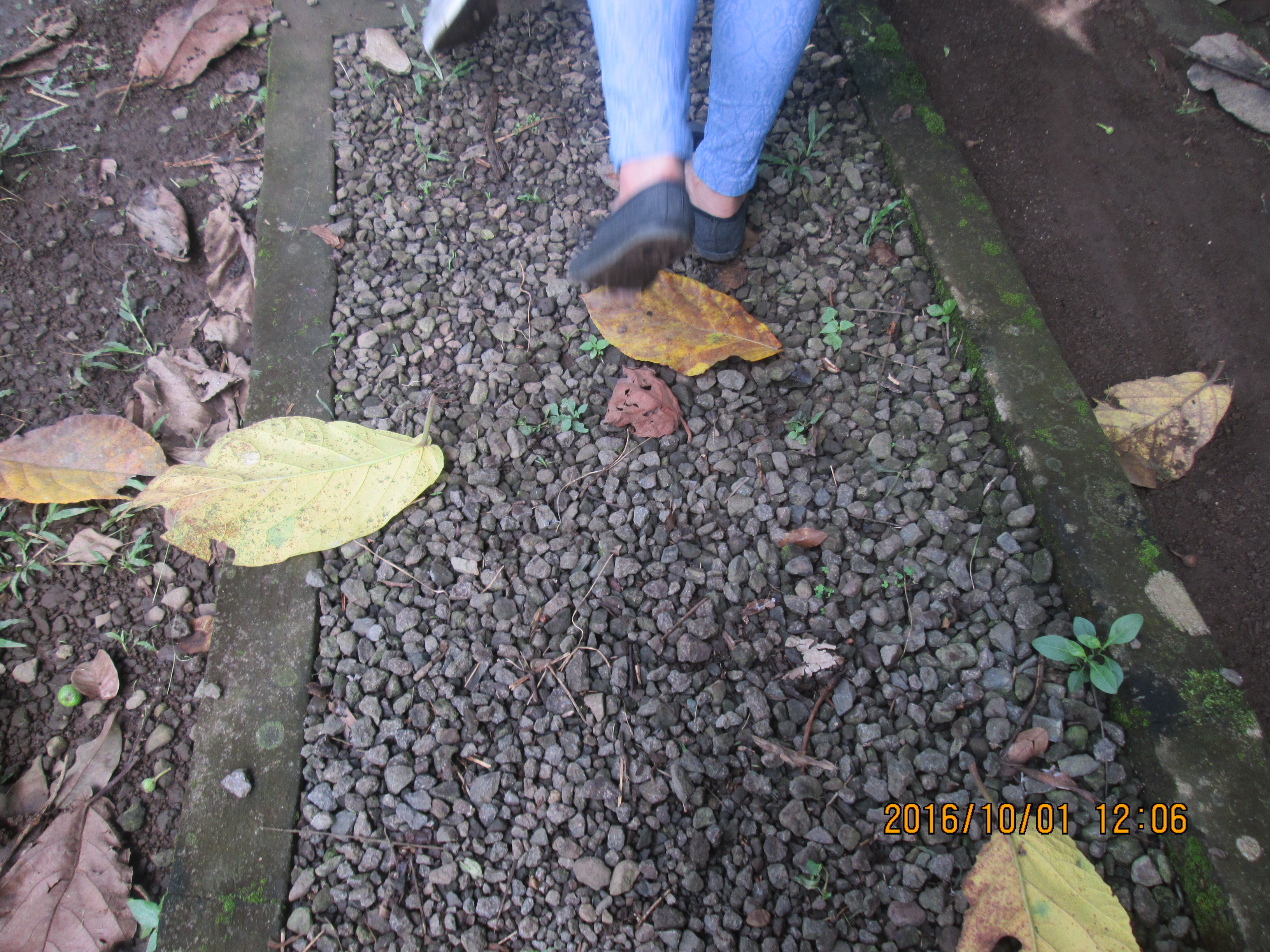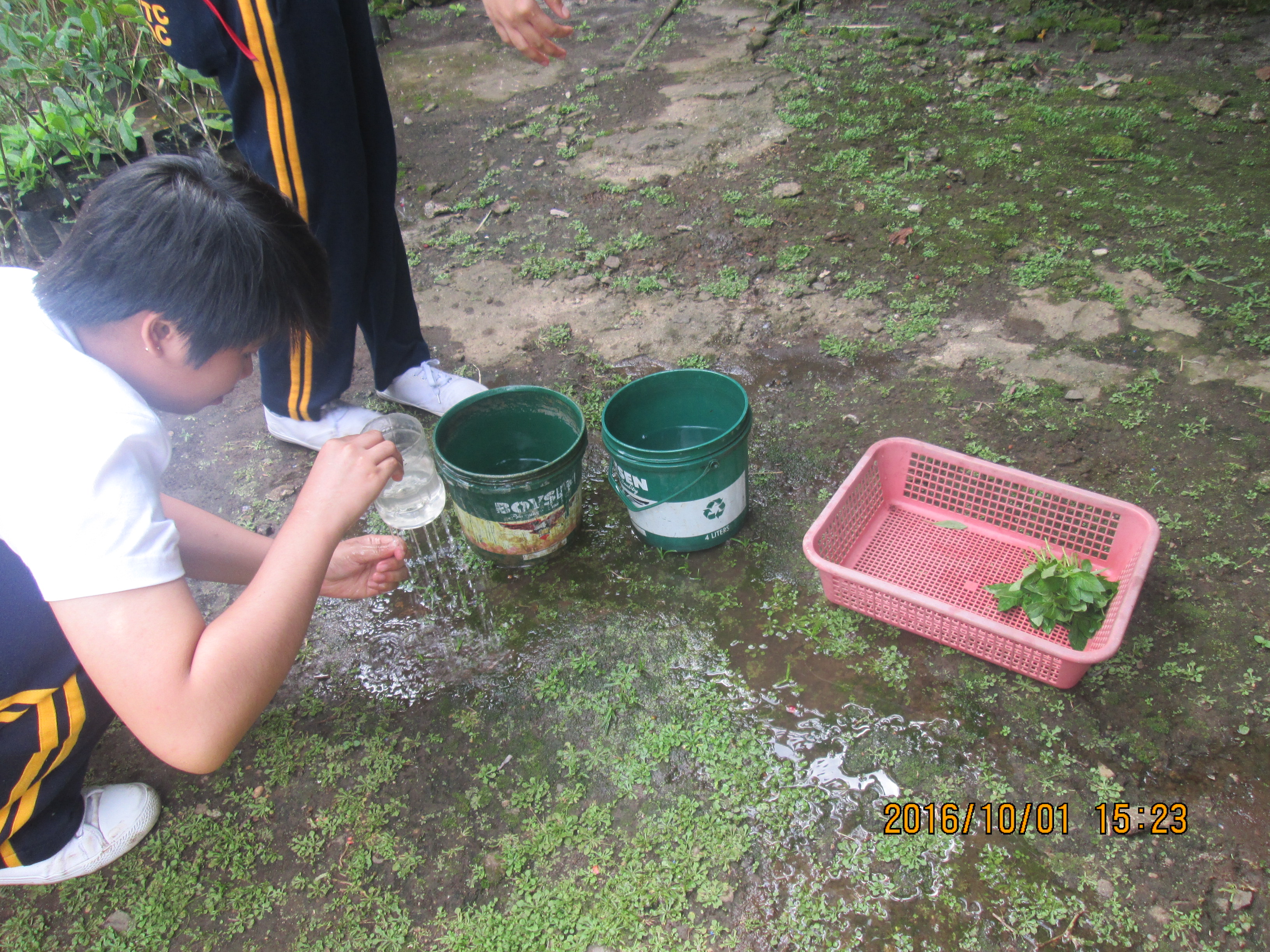Blogs
They say that change is the only constant thing in this world. And yet we are here, trying to evade the long-lasting effects of climate change. But the thing is, this event had already been started millions of years ago. However, it is true that we have picked up the pace and made it worse than it had been since the Industrial age. Why does it continue to occur when we, in fact, are more than aware of the situation at hand? We have classes involving this topic, watched it being talked about in the news, and were even in awe of documentaries featuring it. So why does it continue?
Do you know that feeling you get after watching an inspirational film? That kind of feeling that drives goosebumps all over your skin and leave your mind in awe? Well, do you feel that all the time? Alright, alright, I know it’s time to stop the seemingly endless barrage of questions. And believe me, if I had time there wouldn’t just be 4 questions left out there. But what exactly am I driving at by asking you all these questions? Well, have you ever tried to act upon those feelings? Or did you pledge yourself to do anything and everything for that cause only for a day and left it as nothing but a fleeting dream at the break of dawn? Well, don’t you worry my friend because you’re only one out of the hundreds of millions people out there who have done the same thing. And let me tell you that I’m no different. In fact I briefly remember crying because I saw fellow individuals in the African Plains, people who are just like you and me, dying due to Ebola. And the sad thing was no one was there to help them, love them, and care for them. Those who have already contracted the disease were left to fend for themselves and when they died, they were left to rot in the streets. However, there was that one doctor, that single man, who made a difference. He left his country, went to the Africa, and treated the sick despite knowing the consequences of doing just that. But you know what? He didn’t care. He knew, just like our Lord Jesus Christ knew, that a physician does not wait for the ailing patients to come to him, because a physician goes where he is needed. And that man, that caring doctor, died. But not before saving the lives of the people he had come for. In spite of his death, he had given them what they were searching for unknowingly: Hope. The hope that motivated them to continue on living, to save themselves, and to take the risk no matter what hardships it might entail. Because that’s how we survive. That is how we struggle to live.
Admittedly, as I pondered on the noble sacrifice that the man did made me wonder about the choices I made that could possibly have made an impact on the world. Is it really true that whenever I turn of the lights when not in use that I am reducing carbon emissions? With this thought in my head I looked up to the skies and remembered the night sky that once had the façade of a galaxy of stars, whirling in a myriad of colors of violet, white, and red violet, but is now left as an unmistakable spread of black. Black that symbolized the overwhelming stain of pollution made by us humans. And so try to as yourself, when was the last time you tried to reflect on the world in a comfortable silence? When was the last time you decided to lay on the vermillion grass of the province and looked up to the clouds saying, ”The world I am in, is truly a magnificent masterpiece done lovingly by our Creator.”? When? You don’t remember? Well, I don’t really blame you for it. Because the truth is, there’s no one else to blame but ourselves. Instead of trying to do something about our ailing world, we remain engrossed in the faint light of our smartphones and are swept unto the influx of technology that, little do we know, will soon be overcome by nature’s wrath. Luckily, just like the man who went out of his comfort zone and did what his fellow doctors were afraid to do, certain Columbian missionaries, together with their friends, created the Center for Ecozoic Living and Learning or CELL for short. Much to their fortune, they were able to procure a 1.2 hectare of land by the Noel Mondejar Foundation that let them use it without rent for 15 years. Additionally, it was designed as an entirely self-sufficient farm that comprised of productive gardens, organic animals, and tall woodlands. They had been inspired by the way Columbian Mission Society professed their solidarity and compassion for the poor. Aware of the fact that the impact of society on nature is steadily increasing and is in fact taking a step towards destruction instead of progression, the priests were moved to address the system that denies both the poor and the environment of their right to livelihood and progression, respectively. The Assembly, where they had been given the chance to reflect on these thoughts, concluded that indeed “The poor, required of those in solidarity with them a dedication to saving the source of their livelihood, the Earth.”
On the actual day of the trip, which was on October 1, 2016, I climbed onto the bus and wanted to simply sleep for hours. However, I also knew that sleeping would deprive me of the different situations that could be analyzed and observes outside my mist-covered windows. Nonetheless, being sleepy did not deter my eagerness to see what CELL actually was like and determine if going there was really worth the amount we’ve spent. Admittedly, I was quite amused when we got the letter concerning the educational trip to the Center for Ecozoic Living and Learning, which is more commonly known as CELL. Hearing the abbreviation reminded me of days during the 10th grade wherein we had to watch tons, and I mean tons, of educational videos about physics and nature. One such experience included a constantly repeated watching of approximately 12 minute video of CELL which showcased some of the organization’s leading principles and zone areas designated for a certain ecological feature. Hence, I was sort of ‘living the dream’ by embarking on this trip towards the 1.2 hectare of paradise found in Silang, Cavite.
After hours of looking at the window while taking naps once in a while, we finally arrived at CELL. It looked similar to a peaceful forest that beheld a lot of things about nature which we have forgotten to appreciate. We then left our bags in the lunch area and headed to the large two-story nipa hut that was actually termed as the Brendan Hall. The first thing we had to do based on the schedule was a talk about the entirety of CELL. And this is what I’ve gathered from all that had been said:
Prayer Ritual
The Earth is composed of 4 elements. Earth…Water…Wind…Fire… Each is attributed to a certain direction and has a particular function that develops our lives. They are interdependent. They are interconnected. And without them, we would cease to function and exist. It’s kind of like being a fish out of water, flapping around, searching for air while there is actually none. Hence, they must be given importance to and we must be grateful for each one.
The Speaker talks about the history and the principles of CELL
Cell Introduction
CELL dreams of a world where humans live in harmony with all the creatures of creation. Where everyone is aware of being Interconnected and interdependent with one another, neither hurting nor taking advantage of anyone or anything. They believe that their mission is to contribute to the magnificence of God’s creation by taking their duty of being stewards of creation seriously and by leaving the title of being merciless destroyers of the Earth behind. And their ultimate goal as a non-government organization is to operate a spirituality center that would not only bring people closer to God, but would also utilize it as a means of alerting the entire human community of the current ecological and social crises in this world so that they may open their minds and become leaders that could change the course of our troubled present. A present that is being haunted by an ecological crisis brought to great proportions. Therefore, CELL serves as a direct response to the challenges and issues that plague and destroy Nature. It serves as a place where people from all walks of life, would be able to deepen their understanding of the different problems surrounding Earth that had been ultimately caused by us. In contrast to this, they also show the brilliance and beauty of God’s Creation, encouraging us to bring the necessary healing to Mother Earth. This is where the New Story of Creation comes in. It reminds us of our role as stewards and inspires us to become creative thinkers that participate in the race to save Mother Earth as we unleash innovative thoughts and ideas that would soon become part of reality.
CELL Sustainable Practices
I find it truly remarkable that CELL is capable of taking into account the principles of Ecozoic Living. In case you don’t know, Ecozoic refers to a home that is full of life in a given period of time. It was during this portion that the speaker reiterated the vision-mission of CELL which is to bring this Ecozoic style of living to the far ends of the Earth and let it live into the future. Even if it had been a mere experiment in the first place, testing whether a particular patch of nature could live on without human impact, it was able to come out successfully, allowing us to take care and develop the present without causing harm to the future. Hence, they developed certain practices and principles that further enriched their achievements toward a green and ecozoic future:
- Organic farming practices
- Organic wastes that came from their home grown animals were used as fertilizers for their varied plant life.
- Serves as a much more affordable and efficient in comparison to commercial fertilizers.
- Native tree and wildlife conservation
- Due to the increasing rate of endangerment in different areas all over the globe, CELL tries to preserve and protect some of the lives of the flora and fauna before it’s too late by providing them a safe and ecozoic habitat.
- Zero-waste Management
- This practice refers to the capacity of a certain group to avoid making trash in a particular area by using less artificial/commercial products and more of those organic ones.
- It is manifested through the utilization of the Materials Recovery Facility-MR/Storage Area (Under Brendan Hall)
- This is an area for processing non-biodegradable wastes here in CELL, which thankfully helps in practicing the idea of zero-waste. This is due to the fact that no waste is disposed of in dump sites and is instead reduced, segregated, composted (if biodegradable) and is stored for future use if it can neither be recycled nor reused for any purpose.
- Trivia: 70% of waste at the household level are biodegradable, 20% are recyclable or reusable, while 10% are residuals
The Solar Panel in Fr. Dominic’s house in CELL
- Renewable Energy
- These are energy sources that can easily be replaced or restored to their former amount.
- Example: Solar energy
The Vermicompost beds, with lots of greens, that had been prepared for the worms.
- Vermicomposting
- This method is mostly known here as a natural catalyzer in the composting process of biodegradables with the help of earthworms. This process is initialized when enough topsoil is produced for the worms to bed in. This level of soil is also known as the vermicast. Now the earthworms will digest the nutrients that could be found within the cast and enhances its chemical composition by laying their feces in, on, and under the vermicast. After a month of fortifying the vermicast, the worms are then removed from it, and it is to be dried before achieving its ultimate purpose of becoming a fertilizer for other plants.
- Note: Proportion of waste material to worms is 5 kg material to 500 worms (0.5 kg)
- Permaculture
- CELL’s way of living id founded on the philosophy of design called Permaculture. This topic bears witness to the fact that as we are all a part of God’s wonderful creation, one must maintain the sensitive ecological balance between all things by making sure that all creatures, no matter how seemingly insignificant they may seem have a place in this world. Even though an area of CELL may function to be a farm that might seem to take advantage of the products and properties of various plants and animals, it is a farm that promotes an agricultural way of life that allows the different creatures to benefit as well.
- The idea of Permaculture is manifested by:
- Believing CELL to be an area for human activity but is also for the efficient raising vegetables and farm animals within it. In line with this is the act of growing fruit trees and other trees indigenous to all regions as well as a wildlife area for sensitive creatures.
- Having the capacity to feel conscious that the soil we are moving on is not merely a means of transportation, for it also functions as a home for the plants and microorganisms that thrive within it.
- Respecting each other’s existence by living in harmony with each other as we are aware of our role in maintaining the ecological balance between things.
- Recycling of Water
- This practice is possible for the entirety of the CELL community, since they have efficiently designed that all the pipes connecting from the sinks and the bathrooms are lead to particular parts of the farm where the wastewater would go through. Afterwards, they are exuded and then serve as nourishment for the variety of plants which they come in contact with. This is the reason why the point persons did not allow us visitors to use commercial soaps for these might have unnecessary chemical components that may endanger the lives of the plants and other microorganisms (most of which are needed for the functionality of the Biodigester).
Touring of the Compost Toilet near the house of Fr. Dominic
-
- In relation to this practice is the use of the Compost toilet by CELL. It serves as another way of processing waste that aids in the conservation of water as no flushing is required. The waste immediately undergoes aerobic decomposition after the discharge and leaves the utility free of unpleasant odor. It also helps leave the water table free of harmful contaminants unlike commercial toilets.
- Water Management
- CELL reiterates that nature teaches us the importance of waste products, as they can be either be life-giving (i.e. oxygen which is a plant waste that allows us to breathe and survive) or life-ending (i.e. Smoky Mountain causing havoc to its residents). Hence, with this ideal driving the founders and caretakers of CELL towards sustainable development, CELL has set-up a series of processes and systems of managing their wastes so that they may become life-giving, instead of life-ending to other creatures.
- In order to appropriately process human wastes, all of the comfort rooms in CELL have been designed to have their pipe/tubings in direct connection to the Biodigester which aids in the separation of solid and liquid wastes.
- Consequently, the solid waste that enters the biodigester is consumed and then transformed with the aid of microorganisms into a reliable gas source (biogas production process) as well as an efficient fertilizer.
- On the other hand, the liquid waste is filtered until it is clean and sufficient enough to serve as the plants’ source of water/liquid nourishment.
- Compost Area
- This is the location where all the biodegradable wastes of the farm are disposed of and processed so that they may be decomposed and return to being a part of the soil/earth. It aids in balancing soil pH and lessening waste disposals in landfills.
- CELL compost is generally used for the enhancement of vermiculture, mulch, and soil processes
- Composting takes a little over a month if not periodically over tuned. However if it had been able of being overturned every two to three days, then the compost will be ready in two weeks.
- The Process:
- Firstly, the eaves, branches, and other biodegradable materials are gathered and shredded by means of a shredder before being stacked up in various compost bins.
- Afterwards, The shredded materials within the bins are to be made moist by sprinkling some water upon it (as much as possible from biodigester) while stacking or alternating shredded materials with a chopped banana trunk for levelling purposes.
- A sure sign of good moisture is when a drop of water manifests once a handful of the composting material is squeezed
- This is the location where all the biodegradable wastes of the farm are disposed of and processed so that they may be decomposed and return to being a part of the soil/earth. It aids in balancing soil pH and lessening waste disposals in landfills.
The Biodigester is surrounded by fellow Environmental Education students who’re appreciating their surroundings
- Biodigester and Pump
- Biodigester is the technology that processes human waste in order for it to become a definitive source of organic fertilizer, cooking gas (methane) and water for plants.
- The Process:
- The wastes coming from the toilets in the Dormitory, Brendan Hall and the Guest House are centralized in the biodigester. In here, wastes undergo anaerobic processing, with the help of various microorganisms, which result to the formation of methane and organic fertilizer.
- On the other hand, liquid wastes coming from the toilets, also known as black water, undergo filtration, starting from the first compartment until it reaches the pump. The substance produced is high in nitrogen and can only be used by plants.
- In CELL, the fertilizer used for the different areas of the farm coming from this biodigester is harvested annually due to the gradual process of digestion by microorganisms.
Into the ZONES
The Start of the Closing Lecture about Interdependence at the Brendan Hall
- Zone 0
- This serves as the area for human activities so that the natural processes occurring in other areas of CELL would not be disrupted. It is where one could find the dining areas, the sleeping quarters, the site’s office and the souvenir shop.
- CELL had been conveniently structured in a way wherein the zones that constantly need attention for it to thrive are near its line of site. While those zones with living being that do not require human intervention are located farther from the said area.
“Chilling it out” in the gardens
- Zone 1 - Vegetable and Herbal Garden
- One of the ways in which the residents of CELL benefit from its ecozoic resources is through their use for vegetables. Hence, different kinds of vegetables are grown near the residents’ houses.
- The area’s nutrient levels are maintained through organic farming as well as other practices that do not involve the use of synthetic chemical substances. Consequently, CELL makes use of the fertilizer coming from the biodigester in order to steadily boost the structures and quality of the plants while the compost aids in increasing and strengthening the soil’s fertility and structure, respectively.
- Another way of cultivating Zone 1’s soil is through the chicken tractors. Firstly, chickens are kept in tractors where they cultivate the soil by scratching their claws at it regularly. They also aid in enhancing the soil’s fertility through their wastes which function as fertilizer. After a certain amount of time, the chicken tractors are moved to another part of the zone that needs cultivation so that the initial area can already be planted upon.
- The chickens also help in the composting process when they aid in the overturn of composting materials as they scratch and pick out edible leftovers. The compost materials become aerated as they are overturned, thus hastening the composting process.
- One benefit of having several types of vegetables planted in an area is being able to suppress widespread infestation by various pests. The caretakers reiterated that by putting together the right combination of vegetables, invasive pests would be reduced as some vegetables have the capacity of warding pests from the other vegetables may it be by scent or appearance. Subsequently, having herbs that drive away pests is also another pest management practice. Additionally, the trees around the garden area are also utilized as trellises for the vines so that we do not have to make new trellises for crawling veggies.
The CELL’s chicken tractor mechanism
- Zone 2 - Small Animals Farm
- Zone 2 showcases the interdependence of animals, humans, and the earth. It particularly upholds the use of the Chicken Tractor which is a way for the community to benefit from the chicken’s wastes and habits. Moreover, allotted spaces for food scraps which the chickens scratch resulting to the hastening of the composting process as these are constantly overturned could be found here. Conversely, the processing of gray water could also be seen here as it passes through the guesthouse & kitchen by means of the gutter, ultimately reaching a catchment area where chickens can pick on leftovers, if there are any.
- Zone 3 – Flowering and Fruit – bearing Trees
- It is evident that all the zones here in CELL are interconnected with one another. In fact, the fruit trees found within this area benefit from the water filtered out by the biodigester. Additionally, agents of pollination like that of bees and butterflies, help trees produce fruits by pollinating them.
- Zone 4 - Renewable Material Area / Timberland
- Timber trees are one of our ancestors’ major source of construction material in the past. However, due to extensive deforestation and negative human impact, the number of timber forests have severely dwindle. As a matter of fact, a number of trees of this kind have already been deemed endangered. Hence, CELL is trying to preserve and protect these trees for them to proliferate once more.
- Zone 5 – Wildlife Zone and Reserve Pond
- The Wildlife Zone comprises 20% of the entire property and has a hold of a diverse number of species. Some of which include: monitor lizards, snakes, a civet cat, and even some common land lizards that have been seen in the area. It also serves as a landing site for birds that have gone tired after following a long migratory route.
- The nature reserve pond is considered to be a vital aspect of the wildlife zone. The main purpose of constructing the pond was to lure marine as well as other types of creatures into the area in order to increase the population of diverse species already living within the area. Additionally, the presence of birds further increases the vegetative population within the area, since the birds’ droppings serve as fertilizers and catalysts in making the seeds, which may originate from them, germinate and making plants develop, respectively.
A Glimpse of the Tour
Gravelly footpaths are roads less travelled
Touring CELL was truly an exciting endeavor. We were able to meet the creatures living within the different zones, tasted herbs like that of tarragon/stevia/eucalyptus, and learned about the love triangle between the blue wasp, the fruit bat, and the tibig tree. We also saw how the footpaths were lined with gravel in order to allow water to seep through the soil while being able to ward of possibly dangerous snakes at the same time. However, like all things, the activity had to come to an end and we were ushered back into the Brendan Hall in order to synthesize what we’ve learned and draw the necessary conclusions from them.
Ritual
“A Journey of a Thousand Miles begins with a Single Step”
PM, a fellow student, waters the fruit of her labor
Upon reaching and starting the closing ceremony from within the Brendan Hall, we talked about the interdependence between things and how we are all part of the web of life. All of us have a function and it is necessary that we do our part so that we may continue to blazing paths for the future generation to follow. One such action that allowed us to leave a legacy that would surely create a positive effect on CELL in the future was the planting of herbs. We were instructed to scoop an adequate amount of soil into the plant bags that would contain the herbs that were being handed out. This activity made me feel like I really did something to benefit nature and wondered on how I could create a more definitive change to the environment. However, I have decided to start small and work on this idea when I am able to support myself financially and have enough connections that would surely aid in bringing about change.
My Take on the Issue
Our world is gradually dying. It has lost its former magnificence to the vices of man as we continue to influence it harshly and negatively. We have become a greedy generation. A generation that longs for things, and upon acquiring it, still yearns for more. Admittedly, most of us have already lost that feeling of contentedness that comes with having all of our necessities, as we create more and more gadgets that add to our status of wealth, power, and fame. No one seems to care about how the consequences that stem from their actions might mean to others as long as they are able to get what they want. This brings about a widespread of selfishness. Because most of the time, when people sacrifice for what they think is good and see another person cheating for the same ideal, they get aggravated by how unfair these people are and do the same thing. It’s like they get that notion of, “If he can do it, then I can do it too.” and then everyone else tries to join in the bandwagon. However, the good thing is that we are also an innovative world, despite the fact that most of our ideas seem to contribute to the continuous degradation of nature. By innovative, I mean that thoughts, views, perceptions, and concepts that none have ever thought of thinking before. We have created numerous gadgets and have drawn a myriad of processes that have steadily earned our way towards economic success and epistemological advancement. With this in mind, it is clear that we still have a beacon of hope amidst the dark night of adversity. Instead of using these innovations for greedy ideals, we must use them as a means of delivering our message of change to everyone. By becoming united individuals who believe in each one’s capability to bring a significant difference to the future that lies ahead, we will be able to break free of our selfish bonds and in turn, shower selfless acts upon our Mother Nature.
Unfortunately, most of us are still standing on the stage of awareness and disbelief. In fact, a great number of individuals are still letting the thought of climate change sink into their heads, as if the countless natural disasters that came their way have not made it evident enough. While some are still debating on whether to aid or not, for they are unsure if climate change is truly a matter of importance. However, if continue on at this rate, who knows what would happen? We are clearly near the finish line, the line that separates us from a world that can be saved and an inevitable and impending extinction. Time is running fast, it would not stop to wait for us to stop buffering and actually do something about the situation. Nevertheless, it does serve as a warning. A warning for us to step back, reflect, come up with various intelligently plausible solutions, and join hands in saving nature. We are in the midst of possible redemption and a likely failure, but we must remind ourselves that this Earth is our only home. And so we are going to have to fight for it. Because no matter how much damage our world bears due to our arrogance and carelessness, it does not need us. It has survived for eons without us and would have continued to thrive without us. It is the whole of humanity that greatly depends on nature. We have not yet reached total annihilation, but poverty, scarcity, and death remain evident indicators of deprivation of a healthy, clean, and safe environment.
We have to change. I have to change. One must first change before invoking the necessary change in others. We have made our beds, but we do not have to lie in it just yet. Fortunately, we still have the time to fix it. However, it is also clear that we cannot return nature to its former self, because when you break something it never becomes the same again no matter what you do to fix it. Nevertheless, we must have the courage to try. Because nothing will happen if we don’t do anything about it. Well, not exactly nothing for nature will simply continue to degrade due to our ignorance and indifference. And so we must also strive to change our attitudes. A person who readily complies to the idea of saving nature but remains unwilling to actually do anything about it, is like carrying a banner with the motto “Save the Whales!” while watching a real live whale meet Death due to dynamites and toxic substances coming from factories. The point is, we should not stop at eloquent words that portray our love for nature. Because in the end, actions speak louder than words.
Hence, I look up to CELL for defying public principles, for going against the tide in order to create an ecozoic zone for different species. They have created innovatively efficient practices that would surely lead to a sustainable future. I simply hope that more organizations would walk towards the path that CELL had paved the way through. There is definitely strength in numbers. However, there is change when those numbers actually try to work together instead of separately going about their ideas. We must try to become humble and swallow our pride if we want to create a ripple that would convince society of our thoughts toward nature. Climate change is now an issue we cannot ignore. Once we turn our backs to it, it would not be afraid to strike back and destroy the small things we have tried to do to solve it. In a nutshell, we must live the dream of those we look up to instead of remaining in a state of admiration. We must reflect on why they did what they did and apply these practices in our everyday lives. Let us try living the dream the CELL wants to bring into reality. I assure you, you will not regret it.
Main Source of Information: http://cellsilang.awardspace.com/

